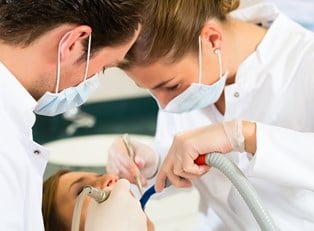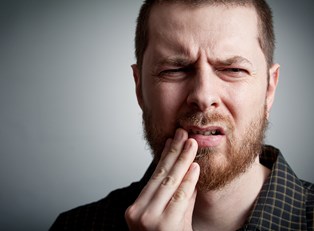Bruxism is the grinding of teeth, combined with clenching the jaw. Diurnal (awake) bruxism is characterized by unconscious grinding and clenching of the teeth and jaw during the day. Sleep bruxism, which is the more common use of the term, refers to grinding your teeth in your sleep. Here’s a look at the causes, symptoms, and treatment of bruxism.
Causes of Bruxism
Because bruxism occurs so often at night, sleep bruxism is generally classified as a sleep-related movement disorder. Additionally, it often co-occurs with other sleep disorders, such as sleep apnea. This may contribute to the presence of bruxism, rather than simply co-occurring. According to the American Academy of Oral Medicine (AAOM), bruxism occurs most often when the sleeper is mildly aroused, changing into deeper cycles of sleep. Diurnal bruxism, however, is generally an unconscious habit that often begins during periods of intense emotions, such as stress, anxiety, anger, or frustration. According to the Mayo Clinic, it may even be a method of coping with these negative emotions. This may contribute to sleep bruxism as well, although researchers have yet to pinpoint a specific root cause. Certain personality types may be more prone to bruxism, particularly those that tend to experience excessive aggression or activity.
Physically, there are also a few potential causes of bruxism. If the jaws are not set exactly right, this misalignment (malocclusion) may contribute to the unconscious grinding and clenching of the jaw. Other issues that may contribute to bruxism include acid reflux, psychiatric and antidepressant medication side effects, or neurological disorder (i.e. Huntington's or Parkinson’s diseases) complications. Additionally, bruxism seems to be more common in children, particularly as a symptom of teething or ear infections.
Symptoms of Bruxism
The constant grinding and clenching of the teeth can cause significant wear and tear on the teeth and surrounding structures. The friction of grinding can cause the teeth to chip, fracture, become loose, and flatten on top. Additionally, the enamel wears off, creating a sensitivity to hot and cold foods; more severe bruxism may make the teeth more sensitive in general.
Additionally, the tongue may develop a ridge following the curve of your teeth along its side, and the cheeks can also be injured from being effectively chewed on for long periods of time each day or night. Bruxism spreads to further facial anatomy as well. The jaw muscles may become sore or tight, particularly in the morning if you have sleep bruxism. Headaches may occur that seem to stem from the temples, because of their proximity to the spot where the jaw meets the skull. Your face may feel painful from the tension in the muscles across the area; this can be extensive enough to seem like an earache.
If the face, jaw, and teeth become painful enough, it can be difficult to eat -- particularly foods of extreme temperatures or textures (for example, biting a popsicle). Eventually, the constant pressure can lead to temporomandibular joint problems (TMJ). Additionally, sleep bruxism can be extremely obnoxious for your partner; it can be quite noisy.
Treatments for Bruxism
Treating diurnal bruxism is often dependent on having your attention brought to the presence of the habit. From this point, it can become easier to manage. Many experts recommend behavior modification, although other treatment methods may be necessary. Dental splints and mouthguards can be useful for day and nighttime bruxism. Splints can help prevent clenching and grinding, while mouthguards can help protect your teeth.
In some cases, fixing underlying problems, particularly malocclusion can help realign the teeth significantly enough to halt bruxism. Relaxing to relieve stress and extreme feelings can help rid your body of the need to feel clenched up, thus exhibiting this clenching in the jaw. Biofeedback is often helpful. Treating the symptoms of bruxism can help make the disease more manageable if you are having difficulty curing the issue, or if you have a particularly severe case of bruxism.



